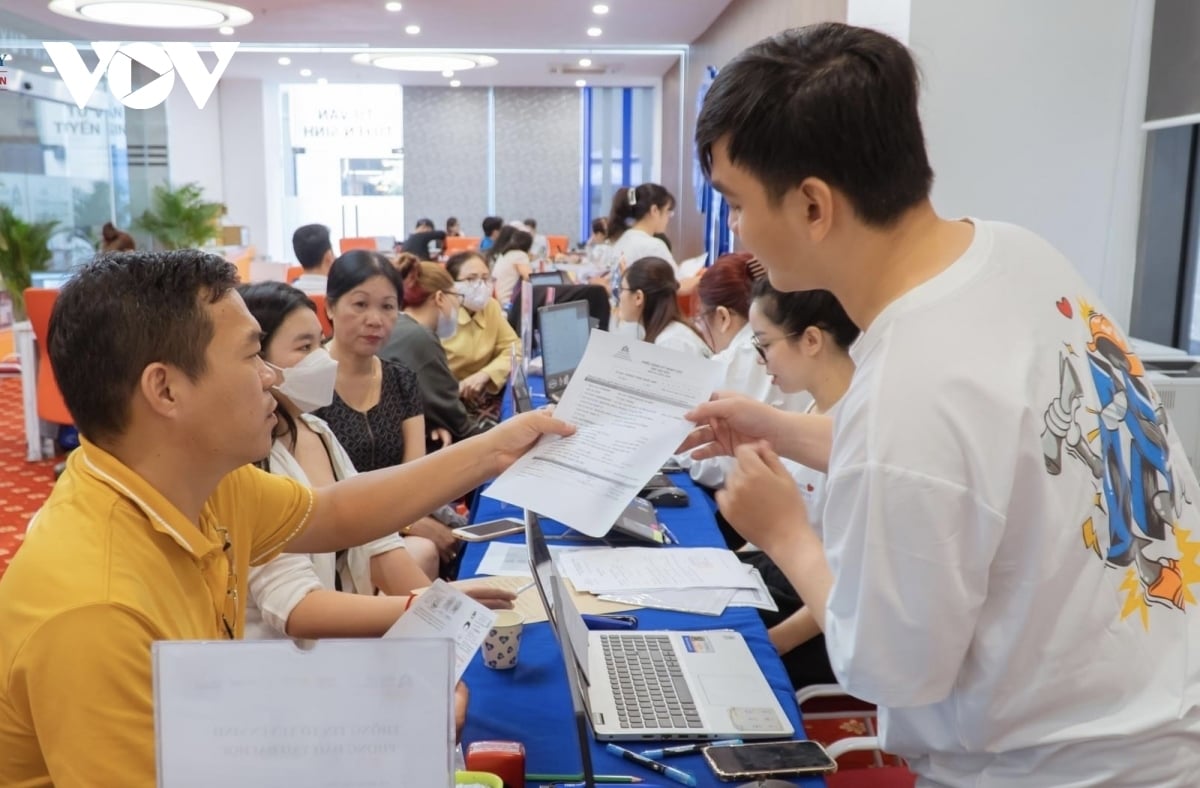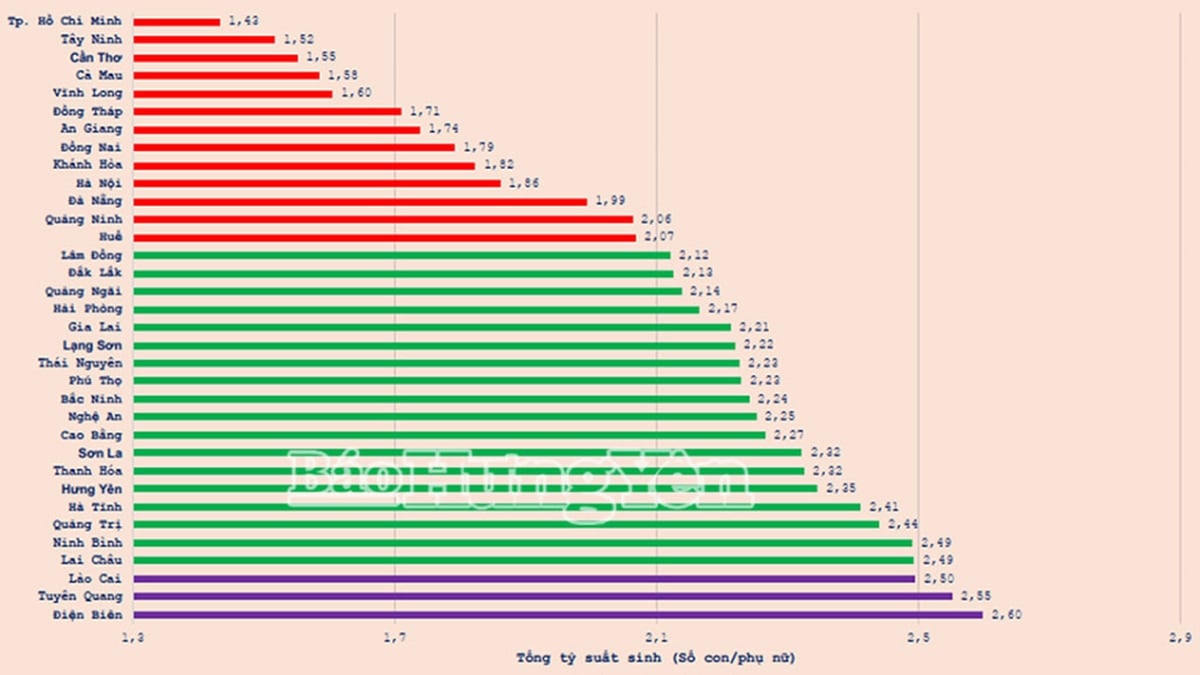Resolution 57-NQ/TW of the Politburo on breakthroughs in science, technology, innovation and national digital transformation is identified as the "compass" for training, an opportunity for educational institutions to promote scientific research associated with the development of high-level scientific and technological human resources. The goal is that by 2030, the human resources for scientific research, technology development and innovation will reach 12 people per 10,000 people; there will be 40-50 scientific and technological organizations ranked in the region and the world; the number of international scientific publications will increase by an average of 10% per year...
To attract students, you must answer the question: Will there be a job after graduation and will the salary be high?
Associate Professor, Dr. Nguyen Anh Dung - Deputy Director of the Department of HigherEducation , Ministry of Education and Training, said that in 2024, the country will have about 180,000 students studying STEM-related majors (Science, Technology, Engineering, Mathematics) - which are key majors in developing human resources for science and technology. This figure is higher than in 2023. If calculated on average over the past 4 years, the enrollment scale of STEM majors has increased by about 10% per year, this increase rate is higher than the average increase rate of enrollment scale of the whole country (the enrollment scale of the whole country increased by an average of about 5.6% per year).

Meanwhile, in 2024, the scale of STEM training nationwide will increase by nearly 11% compared to 2023, equivalent to over 62,000 students studying STEM majors. The number of students studying STEM is currently at about 55 students per 10,000 people, which accounts for about 30% of the total training scale. Meanwhile, for Singapore, this rate is about 46% of students studying in STEM majors, Korea is about 35%, Finland is about 36% and Germany is about 40%.
Thus, it can be seen that the rate of students in Vietnam studying STEM, although in recent years has increased in both enrollment and training scale, in the overall picture, compared to developed countries and countries with modern science and technology, this number in Vietnam is still modest.
Prof. Dr. Chu Duc Trinh, Principal of the University of Technology, Vietnam National University, Hanoi, asked the question, so why do students today not choose STEM majors much?
“It's not that our students don't try hard, aren't good, not because they're lazy, not because they can't study, but because the ultimate goal that students and their families want is to have a job after finishing school, and does the job meet their living conditions?
That requires us to create an information channel, an ecosystem for students to participate. In the coming time, STEM education in Vietnam has opportunities not only for universities but also for each student after graduation to have working conditions in a modern industrial environment, high salary and very stable job until retirement age. This is also what needs to be raised and is the responsibility of all relevant parties to build", said Prof. Dr. Chu Duc Trinh.
According to Dr. Le Truong Tung, Chairman of the Board of Directors of FPT University, the number of students in the STEM field (Science, Technology, Engineering and Mathematics) is still low. Therefore, there needs to be a solution to create a shift and influence each student to choose this field.
Dr. Le Truong Tung analyzed that if there are learners, there will be a way to implement it, along with the management of the State, the investment will ultimately lead to higher quality. But if there are no learners or not enough of the desired quantity, it will be very difficult.
“Currently, we are building a training program framework for semiconductor microchips, which sets out input criteria. This is a quality requirement, but if the number of responses is not high, we should think carefully. We need quality and management at the output, not tightening the input right away. Because training human resources for an industry requires the majority, which is different from elite training. If we need the majority but we “block” the input right away, the policies will be contradictory,” said Dr. Le Truong Tung.
Need attractive credit and scholarship policies to attract students
In addition, according to Dr. Le Truong Tung, training high-quality human resources does not stop at knowledge but also requires the ability to research and practice creativity. In the current context, there needs to be mechanisms and policies on credit, scholarships and tuition fees to attract excellent students to study in key technical and technological fields. Currently, the student finance model and, by extension, the economic model of higher education institutions are issues that are rarely given the necessary attention. The Government has just approved the Planning of the network of higher education and pedagogical institutions with a lot of content, but it seems that there is still a lack of content related to finance for higher education. Without enough funding for higher education, the requirement for high-quality human resources is difficult to achieve as desired.
Dr. Le Truong Tung analyzed that the average tuition fee of Vietnamese higher education is in the lowest segment in the world. If we consider higher education as a service sector, we are providing a service at a very low price and cannot export it. Higher education is one of the top 5 export sectors for many countries, such as Australia. Therefore, in planning to talk about resources for developing higher education, we need to talk about the average cost of training a student.
"The average cost of training a student is calculated from many sources, not just tuition fees - the amount that students have to pay. In addition, it is necessary to compare the cost of training a student in Vietnam today with other countries in the region and set a target for the next 5-10 years, from there, come up with solutions, especially important in terms of credit mechanisms. Student credit is to take advantage of future resources to invest in the present, students will pay with their own money later. This is an important issue, but currently student credit is still small in scale, and the amount is also small compared to other countries", emphasized Dr. Le Truong Tung.
Compared with other countries, Dr. Tung said that in other countries, it is common to apply the following rule to calculate the tuition fee structure according to the level of 1 year of average salary after working to pay 2 years of tuition. Thus, if studying for 4 years, the tuition fee will be equal to 2 years of salary later, high-income people pay more, low-income people pay less. With some schools investing more or having higher quality, the tuition fee may be higher; or some other schools the tuition fee may be lower. If this rule is applied in Vietnam today, the tuition fee at many schools, even though it has been increased, still has not reached the above threshold. Therefore, it is necessary to consider and have synchronous solutions, including communication so that everyone accepts what is a high number and what is a low number. This will create a very good motivation, especially when we are encouraging the development of the STEM field.
Source: https://vov.vn/xa-hoi/vi-sao-chua-nhieu-sinh-vien-man-ma-voi-cac-nganh-stem-post1162323.vov






























































![[Maritime News] More than 80% of global container shipping capacity is in the hands of MSC and major shipping alliances](https://vphoto.vietnam.vn/thumb/402x226/vietnam/resource/IMAGE/2025/7/16/6b4d586c984b4cbf8c5680352b9eaeb0)





































Comment (0)